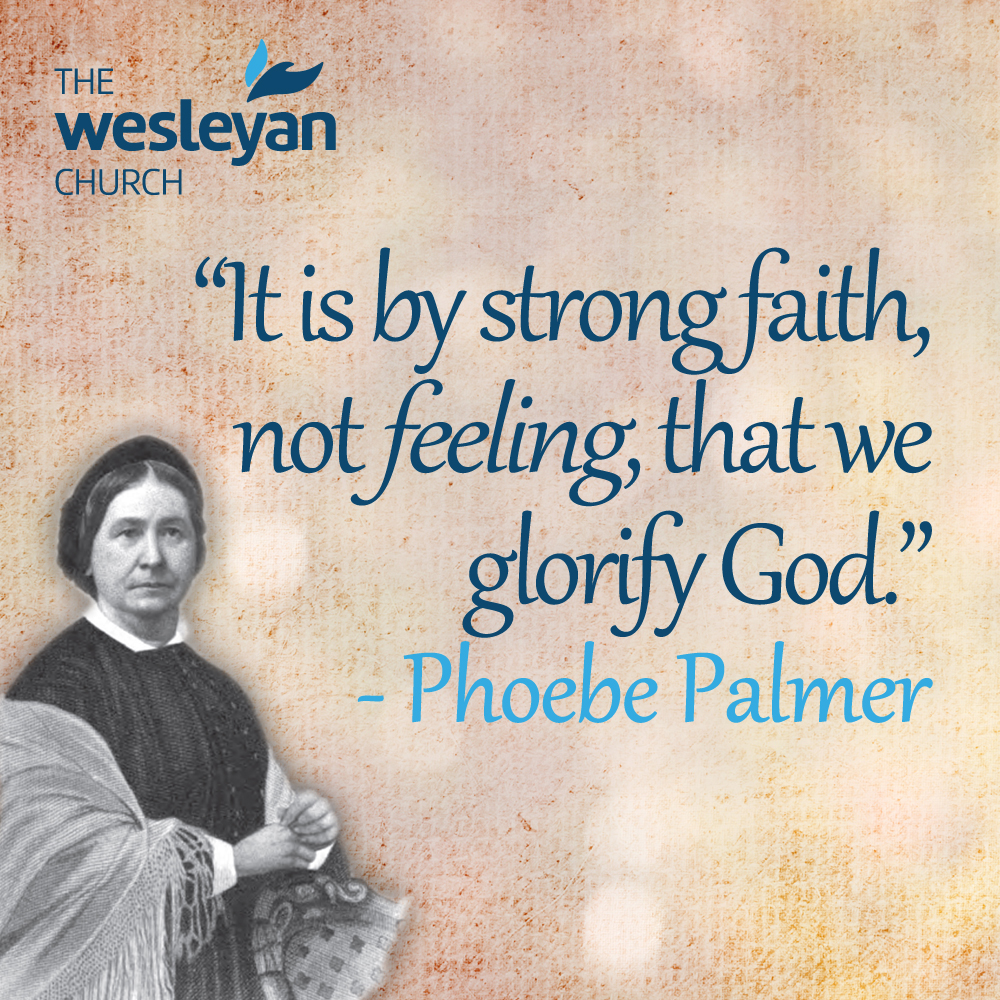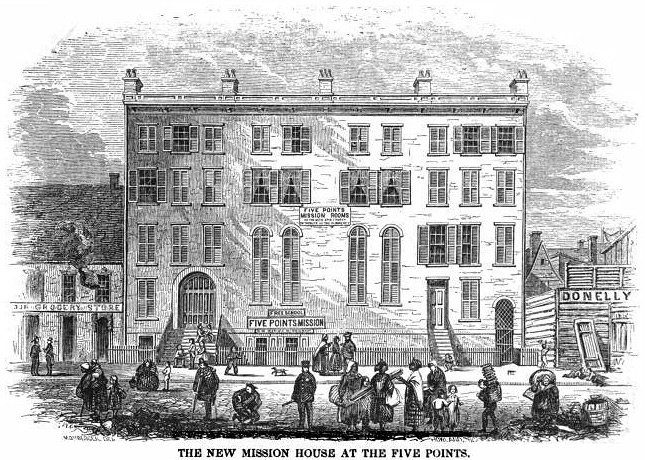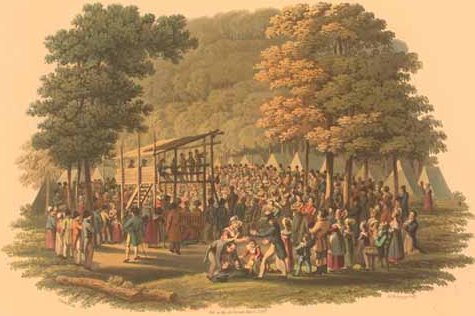Phoebe Palmer was known as “the Priscilla who had taught many an Apollos the way of God more perfectly.” (Timothy L. Smith)
In this coming series of posts we will look at the stories of some leading Christian women of the 19th century. These women received a call from God to minister in various ways. They all strived in their duty to serve God by caring for the poor or downtrodden. They all held to the traditional stations in life for women, but they did not avoid speaking in public just because of their gender. They saw leadership positions as being for men generally, as it was in the Bible. However they also noted the women in the Bible that God occasionally used to accomplish His work. Deborah (Judges 4 & 5), Huldah (2 Kings 22), and Priscilla (Acts 18) are proof that some women are called and equipped to lead God’s people.
In the next few posts we will look at the lives of three women who were primarily evangelists who ministered with their husbands as they thought proper for women – Phoebe Palmer, Catherine Booth and Hannah Whitall Smith.
 Phoebe Palmer was born to Henry and Dorothea Wade Worrall in 1807. Her parents were active and devoted members of the Methodist Episcopal church in New York. Phoebe grew up in a home where religious observance was taken seriously. Her family gathered twice a day to sing hymns, read the Bible, and pray. Grace was said before and after every meal.
Phoebe Palmer was born to Henry and Dorothea Wade Worrall in 1807. Her parents were active and devoted members of the Methodist Episcopal church in New York. Phoebe grew up in a home where religious observance was taken seriously. Her family gathered twice a day to sing hymns, read the Bible, and pray. Grace was said before and after every meal.
When Phoebe was thirteen she made her faith her own by acknowledging Christ as savior and joining the church. Shortly after this Phoebe felt that something was lacking in her experience and she began to pray for a fuller assurance of faith.
At age nineteen Phoebe married Walter Clarke Palmer, a homeopathic doctor. Walter had also been raised in a devout Methodist home. Sadly, their first two children died in infancy. Phoebe took this as a sign that she had given too much attention to family to the complete neglect of religious things. From now on she said, “Jesus must and shall have the uppermost seat in my heart.”
Phoebe then had a baby daughter, Sarah, who lived to adulthood. Phoebe’s fourth child died in a nursery fire. Again she interpreted this tragic event as a prompting from God that she was not as ” spiritual” as she ought to be. Phoebe began to seek a more intense spiritual experience.
On July 26, 1837, Phoebe had the experience of a “full assurance of faith” that she had been seeking for so many years. She later wrote, “New light burst upon my soul. The Holy Spirit took of the things of God, and revealed them unto me. It was by the unfolding of this passage to my understanding: ‘I beseech you, brethren, by the mercies of God, that ye present your bodies a living sacrifice, holy, acceptable unto God, which is your reasonable service’” (Romans 12:1). Phoebe believed that up to this time she had not surrendered her whole being to God. She also believed that now that she had given herself completely to God, the blood of the Lord Jesus Christ would keep her sanctified.
At around age thirty, Phoebe began to help her sister Sarah Lankford with prayer meetings. In 1840 Sarah moved away and Phoebe assumed the leadership. These meetings became known as the Tuesday Meetings for the Promotion of Holiness and Phoebe would continue these for the next twenty years. Phoebe’s ministry influenced hundreds of people including many Methodist ministers and several bishops.
Other women were inspired to begin prayer meetings and dozens of groups sprang up around the country. One special thing about these prayer meetings was that Christians from many denominations would gather and lay aside their petty sectarian differences in order to pray together. Phoebe’s influence reached to Congregationalists, Episcopalians, Baptists, and Quakers. All of these Christians had sweet fellowship as they sought the Lord in prayer.
Though Phoebe is more often remembered as the Mother of the Holiness Movement, she believed in putting her faith into action in practical ways as well. Phoebe helped to establish the Hedding Church. This mission was under the auspices of the Ladies Home Missionary Society and was an early example of what would later become the settlement houses. Phoebe also served as an officer in The New York Female Assistance Society for the Relief and Religious Instruction of the Sick Poor for ten years.
Phoebe distributed tracts in slums and visited prisons. She founded the Five Points Mission that  housed twenty poor families and provided them with shelter, food, schooling and religious training. Again these would become aspects of the later settlement houses.
housed twenty poor families and provided them with shelter, food, schooling and religious training. Again these would become aspects of the later settlement houses.
Phoebe’s one passion in her life was to be a “Bible Christian”. In addition to all of her ministry activities Phoebe was a student of the Word of God. Phoebe did not hesitate to challenge religious doctrine that she believed was unbiblical.
As a Methodist Phoebe was influenced by Wesley and early in her ministry her thought was very close to the strong “holiness” doctrine of John Wesley. Later Phoebe would come up with her own teaching on sanctification that differed somewhat from Wesley. (See Part 2.) Phoebe believed that once a Christian laid their whole life on the altar the sanctified life began.
 In 1858 Phoebe’s husband Walter cut back on his homeopathic medical business and joined Phoebe in her ministry. Phoebe traveled with her husband and helped to conduct the famous Camp Meetings in the summers. At these meetings Phoebe “preached” primarily on sanctification. Phoebe did not believe it was right for women to preach, but believed that she was able to exhort at the meetings since her husband was with her and he gave sermons at the meetings.
In 1858 Phoebe’s husband Walter cut back on his homeopathic medical business and joined Phoebe in her ministry. Phoebe traveled with her husband and helped to conduct the famous Camp Meetings in the summers. At these meetings Phoebe “preached” primarily on sanctification. Phoebe did not believe it was right for women to preach, but believed that she was able to exhort at the meetings since her husband was with her and he gave sermons at the meetings.
During this period of time a holiness revival was spreading across America. It spread to England and Phoebe and her husband were invited to speak to large audiences in Leeds, Sheffield, Manchester, Birmingham, and many other places.
Phoebe ministered for 37 years, though she suffered from serious health problems. She often had to take out time for rest and recuperation. By the time of her death, she had taken to her bed with blindness, kidney disease, and heart trouble. She died on November 2, 1874 at the age of sixty-six. Her husband Walter wrote, “She was an angel on earth. She was the model mother, the loving wife, the perfect Christian lady. She was God’s chosen one, and faithfully did she obey the instructions of His word.”
Phoebe was a prolific writer. Besides editing “The Way of Holiness”, she also had much to say on evangelism, sanctification, and the role of women in the church. We will look at some of her writing next week.

